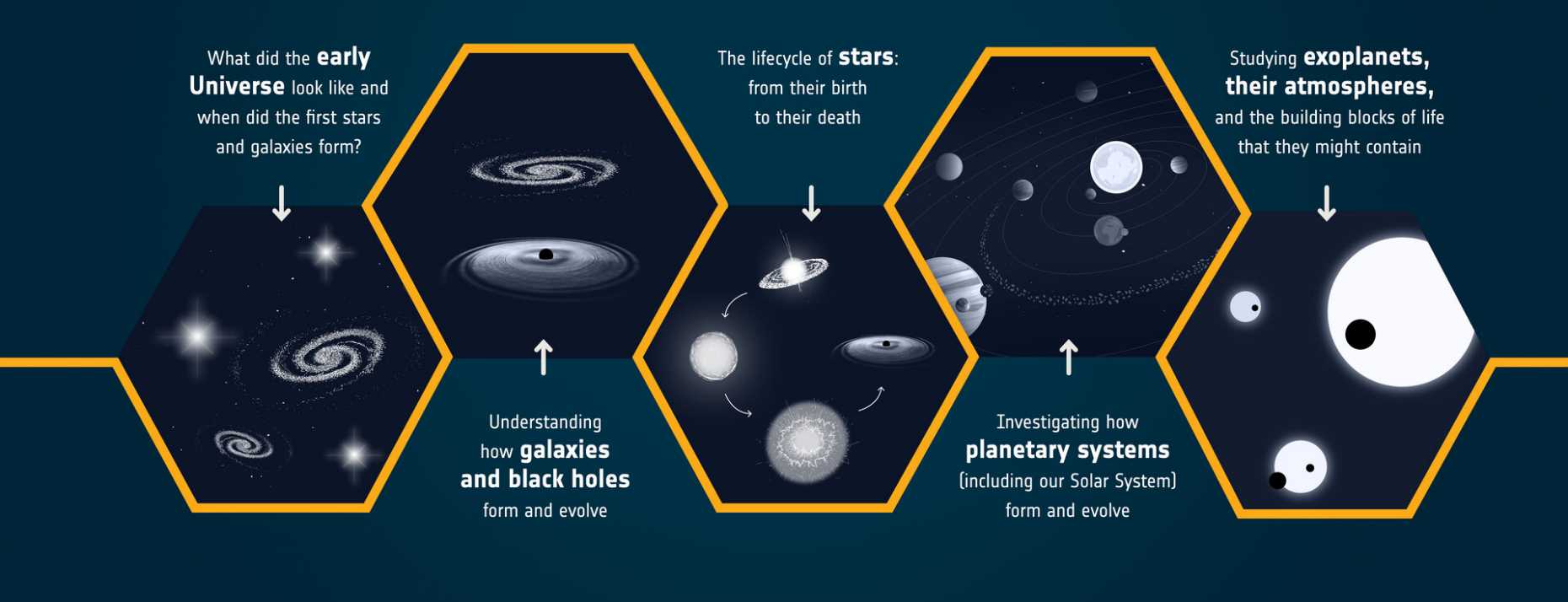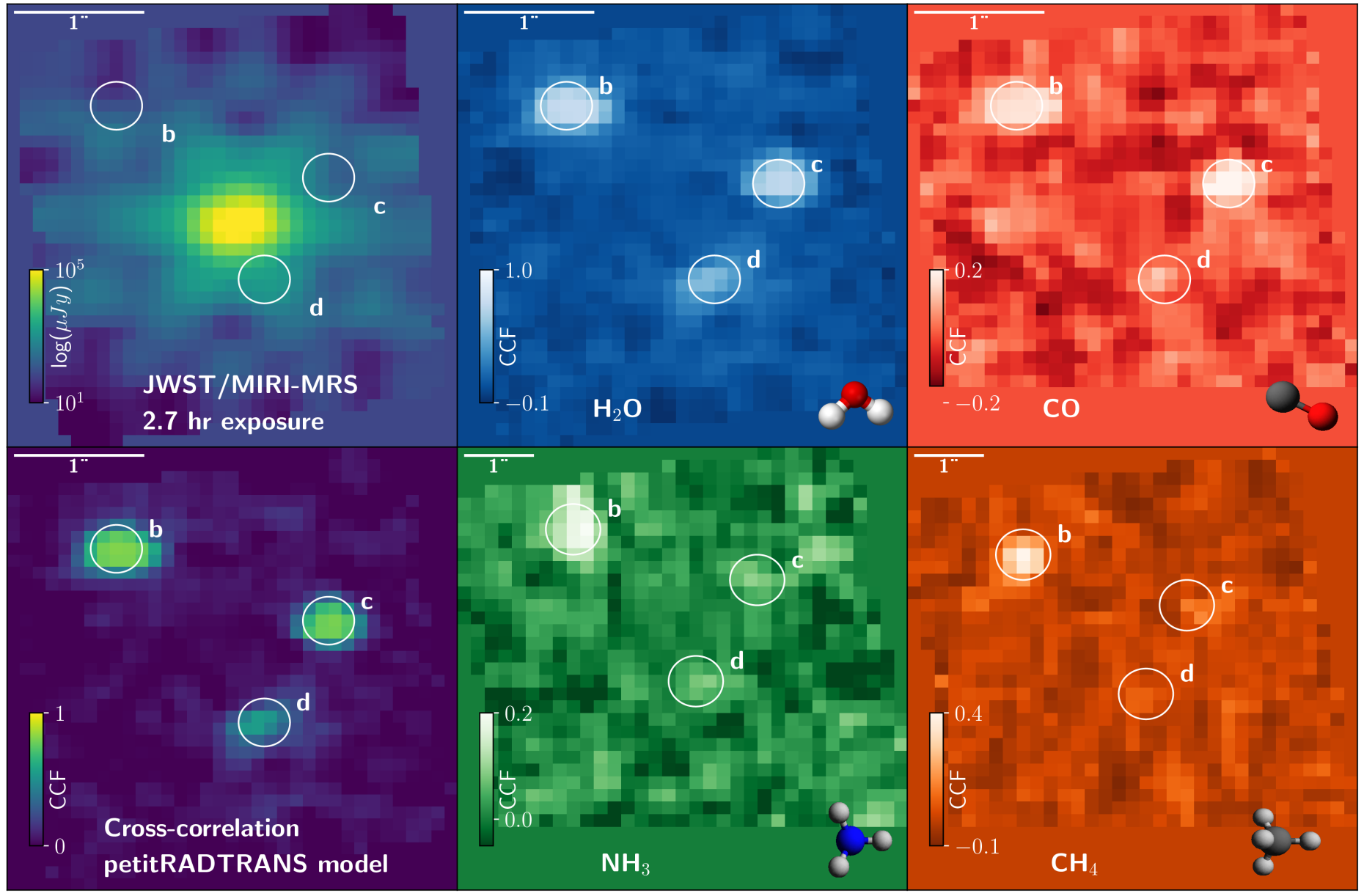Webb Science
Webb science themes
With its unprecedented sensitivity and resolution, the James Webb Space Telescope has the potential to revolutionise the understanding of our Universe at every phase of its history.
The main science themes driving the observatory include the exploration of the early universe and the evolution of galaxies, the birth and death of stars and circumstellar environment where planets form, and the characterisation of exoplanets and their atmospheres that might contain the building blocks of life.

The sensitivity of Webb combined with the wide wavelength range it covers especially towards the reddest part of the spectrum will allow astronomers to observe faint and cold objects that are otherwise not accessible from ground observations due to earth's atmosphere. The colder an object, the less energy it emits, and the more its emission peak is shifted towards longer wavelengths. For example Earth with a 300 K temperature has its maximum emission at 10 μm, right in the middle of MIRI's range. Similarly, cold dust and gas around forming solar systems and structures similar to our Kuiper belt can be observed with JWST.
Characterisation of exoplanets with Webb / MIRI
While JWST was designed for observations of faint galaxies and star-forming regions, the combination of available instruments, sensitivity and wavelength coverage will allow the characterisation of exoplanet atmospheres to an unprecedented level of precision. Using spectrographs we can examine the intensity of light at different wavelenghts, called a spectrum, which can give insights to its chemical composition, formation history, and clouds. Webb will be especially fitting to characterise transiting exoplanet atmospheres, planets that are detected by the dimming of light while passing between us and their star.
JWST will be able to find and characterise young giant exoplanets using dedicated masks that block the light of the star and reveal the faint emission of planets, called coronagraphs. These objects are interesting because we can directly detect light originating from their atmospheres, giving an image of the planetary system and connecting it to its formation. For such Jupiter-like planets we will also try to understand their atmospheric composition by observing them with spectrographs such as NIRSpec and the MIRI Medium Resolution Spectrometer. These instruments provide and image for each wavelength, allowing us to probe the spectrum for different locations in the astronomical scene. For the giant exoplanets we can then search for molecules in their atmospheres, particularly at the never before explored wavelengths of MIRI.
